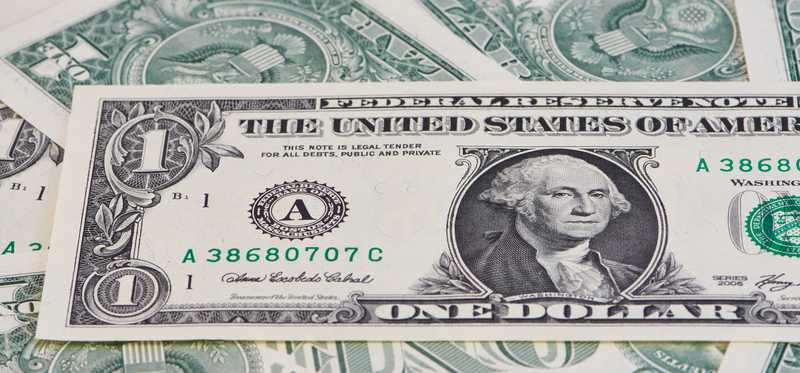These 10 Companies May File for Bankruptcy in 2018

Source: Getty Images
Continue
Reading
1 of
Destined for failure?
Companies that seem healthy often lose their mojo due to rising competition, shifting industry trends, bad management decisions, and the decision to take on too much debt. Those trends sank big companies like Toys R’ Us and Radio Shack in recent years, and plenty of other companies could suffer that fate this year. Let’s take a look at 10 companies that desperately need to turn things around.
ALSO READ: Does Toys R Us' Bankruptcy Doom Mattel? 1 Analyst Fears the Worst
Previous
Next

Source: Getty Images
Continue
Reading
2 of
Helios and Matheson
Last year, data analytics firm Helios and Matheson (NASDAQ:HMNY) bought a majority stake in MoviePass, which let consumers watch a single movie per day for $10 per month. The service attracted over 3 million users, but the business turned into a flaming money pit.
Helios and Matheson racked up $40 million in MoviePass losses in May, and the service was expected to post a $45 million loss in June. That was dire news for a company that had just $18.5 million in cash on hand as of May 31.
The company raised cash with a $164 million bond sale during the summer, followed by a $1.2 billion shelf registration to keep MoviePass solvent. In late July, MoviePass borrowed another $5 million, but the app experienced disruptions for certain movies. Time will tell if MoviePass can survive by altering its business model, but new rival platforms (like AMC Stubs A-List) could bury it for good.
Previous
Next

Source: Getty Images
Continue
Reading
3 of
Southeastern Grocers
Southeastern Grocers, the country’s fifth-largest grocer, is the parent company of BI-LO, Harveys, Winn-Dixie, and Fresco y Mas. However, Southeastern lacks the scale to compete against market leaders like Kroger (NYSE:KR) or superstores, warehouse retailers, and e-commerce challengers.
Southeastern filed for bankruptcy protection in late March, but was back in business by early June. It closed nearly 100 stores during its restructuring, reducing its store count to about 575 locations, and cut its debt -- which reportedly exceeded $1 billion prior to the filing -- by about $600 million.
However, the debt reduction was mostly accomplished by exchanging $522 million in debt for equity and closing stores, instead of any big improvements in its top line growth. Unless Southeastern turns things around at its underdog chains, it could end up in the doghouse again.
Previous
Next

Source: Getty Images
Continue
Reading
4 of
Eastman Kodak
Eastman Kodak (NYSE:KODK), once a market leader in cameras and film, filed for bankruptcy in 2012. It emerged from bankruptcy protection the following year, but the new Kodak mostly relies on selling specific components (like imaging plates) or licensing its patents and brand to generate revenue.
Earlier this year, Kodak announced a cryptocurrency called KodakCoin, which would be funded by an initial coin offering (ICO). It also introduced the “Kodak KashMiner,” which could be rented for mining bitcoin, at CES this year.
However, Kodak delayed its ICO and abandoned the KashMiner shortly after CES. Last quarter, Kodak’s revenue fell 5% annually on a constant currency basis, its cash flow was negative, and it’s still shouldering $395 million in short and long-term debt -- compared to just $275 million in cash and equivalents. Those dismal numbers, coupled with Kodak’s questionable crypto plans, raise red flags regarding its future.
Previous
Next
![A visual depiction of blockchain technology.]](https://s.yimg.com/ny/api/res/1.2/ZThjOcfdcWTRhB8kBlYg1w--/YXBwaWQ9aGlnaGxhbmRlcjt3PTk2MDtoPTQ0OA--/https://media.zenfs.com/en-US/homerun/motleyfool.com/c24772252e77b88b66e1848df21c56a7)
Source: Getty Images
Continue
Reading
5 of
Riot Blockchain
Last year, failed medical device maker Bioptix renamed itself Riot Blockchain (NASDAQ:RIOT), and declared it would pivot its business towards the blockchain and cryptocurrency markets. It subsequently bought Kairos Global Technology, a two-week-old crypto-mining firm that only had $1.9 million in assets (mainly 1,200 mining rigs) for $12 million.
The acquisition was bizarre, since Riot could have directly purchased those rigs from Bitmain for about $2.1 million. Riot paid for the entire acquisition in newly issued shares.
Riot generated $925,554 in revenue last quarter, with $24,174 of that total coming from Bioptix’s prior animal health licensing agreement. Yet it reported a whopping loss of $16.35 million -- compared to $4.35 million a year earlier. Its cash and equivalents also plummeted 87% to $5.3 million. To top it all off, the SEC is now probing Riot over its questionable business model.
ALSO READ: Ask a Fool: What Happens to Shareholders After a Company Declares Bankruptcy?
Previous
Next

Source: Getty Images
Continue
Reading
6 of
HTC
HTC (NASDAQOTH:HTCKF) controlled about 11% of the global smartphone market back in 2011, but tough competition reduced its share to less than 1% today. Earlier this year, HTC sold a large chunk of its smartphone manufacturing unit to Alphabet’s (NASDAQ:GOOG) (NASDAQ:GOOGL) Google to focus more heavily on its Vive virtual reality (VR) headsets.
Unfortunately, the VR market remains a niche one that hasn’t gained much traction with mainstream consumers. HTC’s phone chief also resigned earlier this year, sales of its latest U-series smartphones fell short of expectations, and the company laid off a quarter of its workforce.
HTC’s revenue tumbled 58% annually last quarter and its net loss widened from $1.95 billion NTD ($63 million) to $2.09 billion NTD ($68 million) -- even after including the cash from Google’s acquisition. Robo-advising firm MacroAxis claims that HTC faces a near-50% chance of bankruptcy within the next two years.
Previous
Next

Source: Getty Images
Continue
Reading
7 of
Guitar Center
Electric guitar sales in the U.S. fell 36% from 2005 to 2016, wiping out a long list of guitar retailers. Ares Management’s (NYSE:ARES) Guitar Center, which was founded nearly six decades ago, remains one of the market’s last retailers standing.
Guitar Center closed many stores over the past few years, but it still operates nearly 280 locations. Ares reduced Guitar Center’s debt from over $1 billion to about $900 million, but S&P still gives that debt a CCC rating -- indicating a high bankruptcy risk. That situation probably won’t improve as long as younger shoppers shun guitars.
Previous
Next

Source: Getty Images
Continue
Reading
8 of
99 Cents Only Stores
The U.S. dollar store market is dominated by Dollar Tree (NASDAQ:DLTR), its subsidiary Family Dollar, and Dollar General (NYSE:DG). That left 99 Cents Only Stores -- which is owned by Ares Management, Canada’s Pension Plan Investment Board, and the Gold-Schiffer family -- out in the cold.
99 Cents Only’s top-line growth has improved with several quarters of positive comps growth, but it remains deeply unprofitable. In the first half of the year, it narrowed its loss annually from $42.4 million to $20 million, but still shouldered over $1 billion in debt.
As a result, credit rating agency Moody’s declared that the company’s capital structure was still “unsustainable” last October, while CreditRiskMonitor gave the chain a bankruptcy risk of 50%.
Previous
Next

Source: Sears Holdings
Continue
Reading
9 of
Sears Holdings
Sears Holdings (NASDAQ:SHLD) spun off companies, sold brands, shuttered stores, and cut costs over the past decade, but none of those efforts breathed fresh life into the dying retailer. Sluggish mall traffic, tough competition from superstores and e-tailers, and a lack of new strategies sent the retailer into a nosedive.
Sears’ long-term debt stayed roughly flat year over year at $3.5 billion during the first quarter, but its sales tumbled 31% annually to $2.9 billion and it reported a net loss of $424 million. Wall Street expects Sears’ sales to slide 26% this year and for its earnings to stay deep in the red. That’s why MacroAxis claims that Sears faces a 45% chance of bankruptcy within the next two years.
ALSO READ: Sears Holdings Has an Expiration Date
Previous
Next

Source: Getty Images
Continue
Reading
10 of
David’s Bridal
David’s Bridal was once a popular wedding gown retailer, but tougher competition in the market, weak digital investments, and the “casualization” of modern weddings caused its growth to hit a brick wall. Moody’s claims that David’s Bridal’s annual earnings, which aren’t publicly released, have fallen about 30% since 2012.
This caused the credit ratings agency to downgrade David’s Bridal’s debt to a deep junk rating of Caa3 earlier this year, which followed S&P’s decision to downgrade its debt to a junk CCC- rating. Both agencies are concerned that the retailer can’t pay off its $491 million secured loan due this October, as well as another $270 million in unsecured notes that are due next October. Moody’s analysts declared that the company has "an untenable capital structure."
Previous
Next

Source: Getty Images
Continue
Reading
11 of
Cole Haan
Nike (NYSE:NKE) divested its stake in Calceus Acquisition’s Cole Haan to private equity firm Apax Partners in late 2012. After that split, Cole Haan replaced its Nike comfort technology -- which it integrated into its dress footwear -- with its own technologies, but the change alienated consumers.
In a bid to compete against its former parent company, it launched new sneakers and started selling a wide range of accessories -- which diluted its image as a higher-end dress shoe brand. Moody’s still has a “stable” rating on Cole Haan’s debt, but tough headwinds in the footwear market could still cause big headaches for this fading brand.
Suzanne Frey, an executive at Alphabet, is a member of The Motley Fool’s board of directors. Leo Sun has no position in any of the stocks mentioned. The Motley Fool owns shares of and recommends Alphabet (A shares) and Alphabet (C shares). The Motley Fool recommends Nike. The Motley Fool has a disclosure policy.
Previous
Next

 Yahoo Finance
Yahoo Finance 